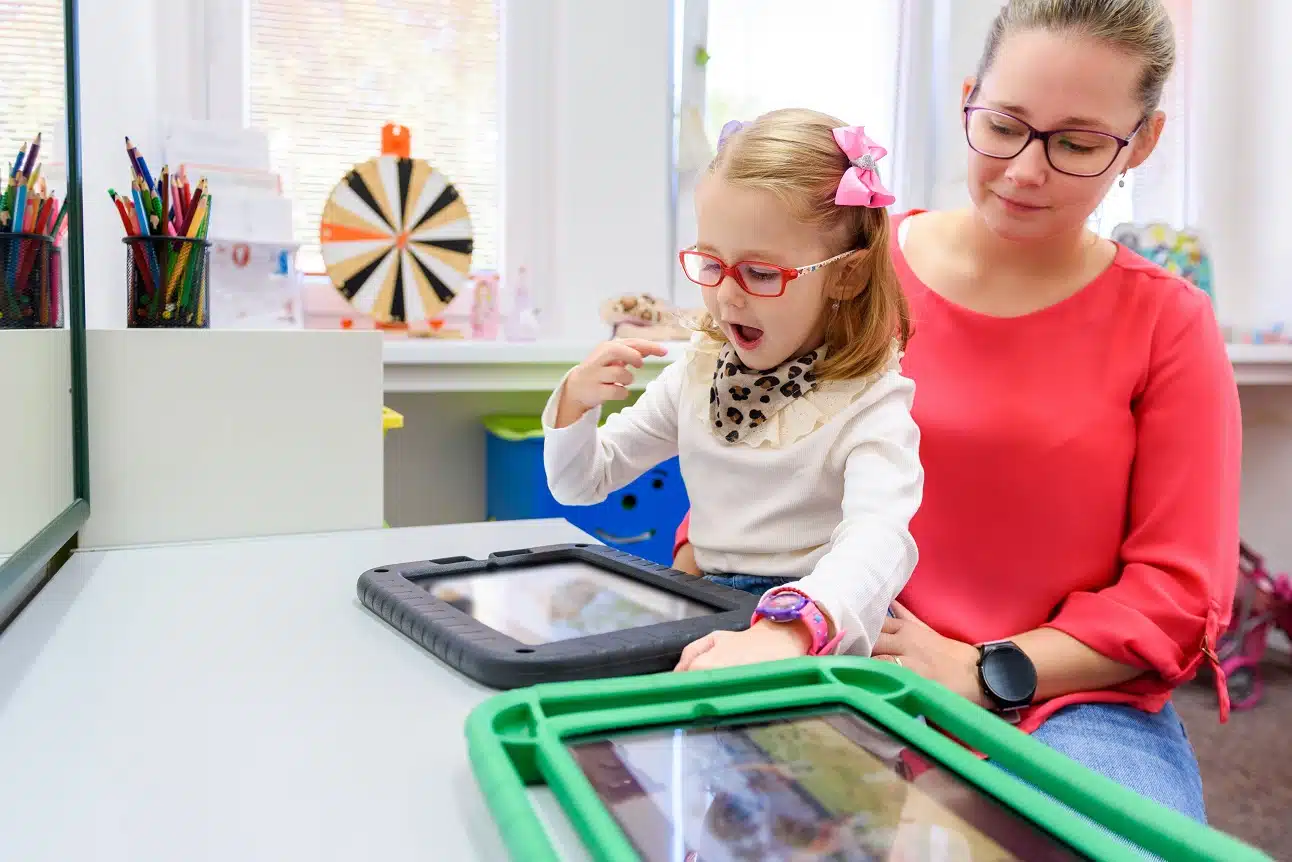By Rouzan Dishoian, MS, CCC-SLP
Communication is a fundamental aspect of human interaction. For some individuals, articulating their thoughts verbally may pose a challenge. This is where Augmentative and Alternative Communication (AAC) comes into play, offering a lifeline to those facing communication challenges.
What does AAC stand for?
Augmentative and Alternative Communication
AAC encompasses all forms of communication methods other than verbal speech. Augmentative means to add to someone’s speech. Alternative means to be used instead of speech. (ASHA)
AAC can take various forms, ranging from low-tech options to high-tech solutions. The goal is to provide individuals with a means to communicate effectively, fostering independence and enhancing their overall quality of life. Some individuals use AAC throughout their lives, others may only use it for a short time.
Low-tech options:
- Gestures and facial expressions
- Writing and drawing
- Spelling words by pointing to letters
- Picture boards and communication books
High-tech options:
- Speech-generating devises
- Specialized software applications on iPads or tablets
Who can benefit from AAC?
- Children with severe speech sound disorders, such as apraxia of speech or dysarthria
- Children with motor impairments, such as cerebral palsy
- Children with ASD
The advantages of AAC are, firstly, it provides a means for individuals to express themselves effectively, enhancing their autonomy and social interactions. It offers a versatile toolkit, including symbols, gestures, speech-generating devices, and communication boards, tailored to the user’s needs and abilities. Importantly, AAC interventions often complement rather than hinder speech development, as they support language comprehension and expression, facilitating communication while promoting speech production.
The introduction of AAC can be transformative, breaking down barriers to communication and providing individuals with a newfound ability to express themselves. It enhances social interactions and contributes to increased independence. Consult with your child’s speech-language pathologist on how to integrate AAC into their daily life.




